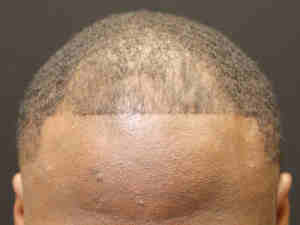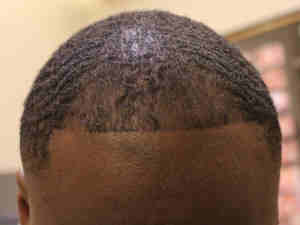PRP Hair Rejuvenation Newark
PRP treatments for hair loss is a minimally invasive treatment that involves withdrawing a patient’s own blood, processing it to collect the enriched platelet rich plasma cells and injecting into the scalp. PRP contains essential proteins that may stimulate natural hair growth. This therapy can be combined with hair transplantation, low level laser therapy or medications such as Propecia, minoxidil or spironolactone.
Blood is comprised of two main components red blood cells and plasma. Plasma contains white blood cells and platelets which are rich with growth factors. Growth factors act as messengers to signal cells to function and has been used in medicine to treat a wide range of health issues including arthritis, wound healing, antiaging and more. For people with thinning hair or progressive hair loss, these growth factors may help stimulate the activity of hair follicles and promote new hair growth.
The clinical evidence for use of PRP in hair loss is for the most part anecdotal but there are many clinical cases showing it’s effectiveness in increasing hair counts, thickness and the growth phase of the hair cycle. More evidence based research is required to assess the true efficacy of PRP injections in hair restoration.
Procedure
- standard blood draw from the patient’s arm with 2 tubes
- the tube of blood is placed in a centrifuge machine where the red blood cells are separated out from the plasma
- this harvested plasma, rich in platelets and growth factors are injected into the scalp at the level of the hair follicles
- topical numbing cream and direct lidocaine injection around the treated scalp area is given prior to the procedure
- the PRP is meticulously injected into the area of hair thinning
- the entire process takes less than 30 minutes
Risks
There are very few risks and minimal to no downtime associated with PRP injections. There may be some local swelling and bruising that resolves after a couple of days. Tylenol and ice packs are recommended for post procedure care.
Who are candidates?
Anyone who is experiencing hair loss is a good candidate for PRP treatments but those with early hair loss and progressive hair thinning tend to respond the best. PRP is best used for patients with androgenetic alopecia which is a genetically determined form of hair loss that typically affects the top of the head. In women, this might look like a widening part within the normal hair thickness in the back of the head.
Results
For best results, combination therapy with low level laser therapy (LLLT) helmet and consistent PRP injection therapy is recommended. Treatments are typically performed once a month for three to four months and every three to six months thereafter depending on the individual patient results and desires. Anticipated results can first be seen within the first two to three months.
Typically, patients usually note decreased hair shedding on their clothes, hair brush and/or shower drains and increased length and thickness of the hair. The general consensus is for PRP treatments every 3-6 months on a longterm basis are optimal to stimulating growth factors and stem cells that are associated with hair regrowth and stopping hair loss.
PRP treatments should be part of a multifaceted program to treat hair thinning and loss in addition to LLLT, topical treatments such as minoxidil and spironolactone and oral prescription finasteride.




